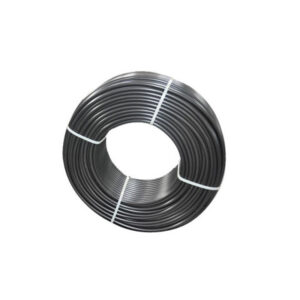The design of an agricultural drip irrigation tube system can help minimize water hammer and pressure surges through several key features and considerations:
- Pressure Regulating Devices: Incorporating pressure regulating devices such as pressure regulators or pressure-compensating emitters into the drip irrigation tube system helps maintain a consistent and steady flow of water regardless of fluctuations in upstream pressure. These devices ensure that the pressure within the system remains within a specified range, reducing the likelihood of pressure surges and water hammer.
- Air Relief Valves: Air relief valves are installed at high points in the irrigation system to release trapped air and prevent the formation of air pockets, which can lead to pressure fluctuations and water hammer. By allowing air to escape from the system, air relief valves help maintain more stable pressure conditions and reduce the risk of pressure surges.
- Water Hammer Arrestors: Water hammer arrestors, also known as surge suppressors or shock absorbers, are devices that absorb the energy of pressure surges caused by sudden changes in flow rate or valve closure. These devices typically contain a piston or bladder filled with air or hydraulic fluid, which compresses to absorb the shock wave generated by water hammer events, preventing damage to the irrigation system components.
- Gradual Valve Closure: Controlling the rate at which valves open and close can help minimize water hammer by reducing the sudden changes in flow velocity that can lead to pressure surges. Slow-closing valves or valves equipped with adjustable closing speed controls allow for more gradual changes in flow rate, mitigating the impact of water hammer on the system.
- Proper Pipeline Sizing and Layout: Designing the irrigation system with appropriately sized pipes and optimal layout helps ensure uniform flow distribution and minimize pressure variations throughout the system. agriculture drip irrigation tube Avoiding sharp bends, sudden changes in pipe diameter, and excessive pipe lengths can also help reduce the risk of pressure surges and water hammer.
- System Flushing and Maintenance: Regular flushing and maintenance of the irrigation system help remove debris, sediment, and air pockets that can contribute to pressure fluctuations and water hammer. Flushing valves and drain lines should be strategically located throughout the system to facilitate purging of trapped air and debris buildup.
By incorporating these design features and considerations into the agricultural drip irrigation tube system, farmers can effectively minimize the occurrence of water hammer and pressure surges, ensuring reliable and efficient operation of the irrigation system while protecting its components from damage.
